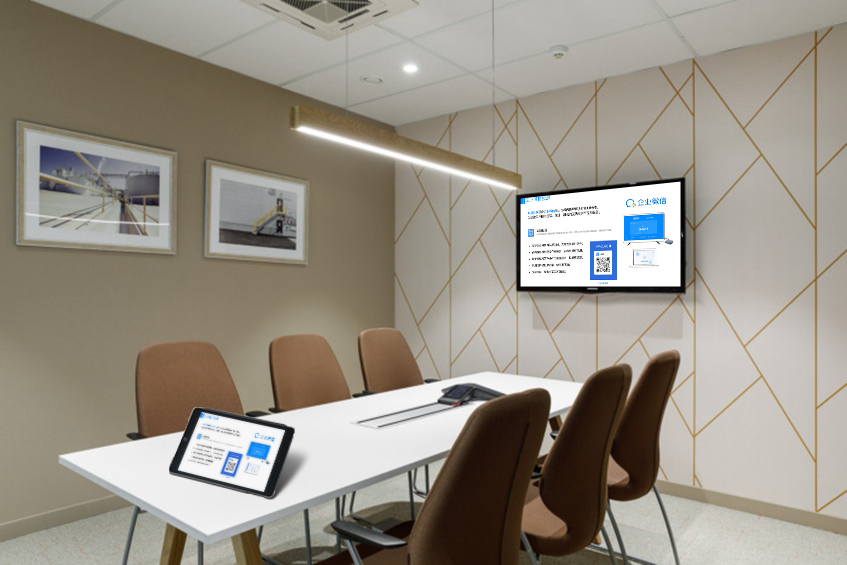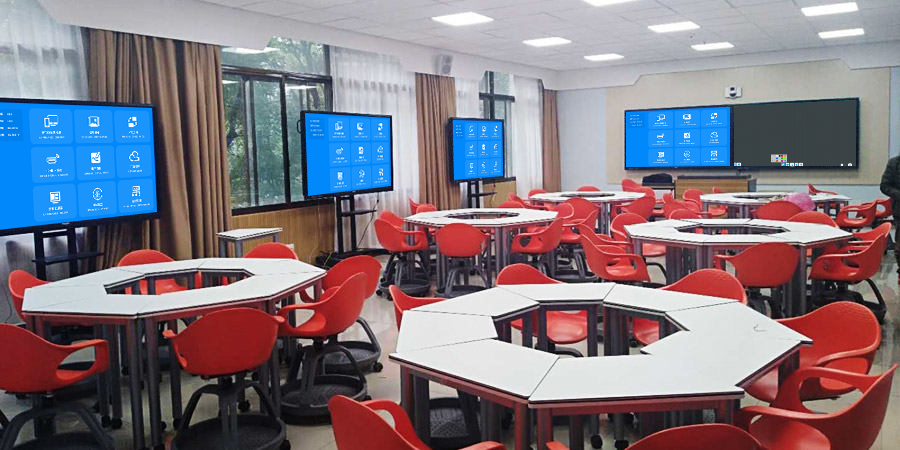Wireless Screen Mirroring: A Seamless Multi-Scenario Connectivity Solution
Wireless screen mirroring serves as the central link connecting small screens to large ones, covering office, education, home, and commercial settings. This technology breaks down device barriers, simplifies operations, and ensures transmission quality, unlocking the full value of small-screen content on a larger display.
I. Core Technology: Compatibility, Stability, and Efficiency
(I) All-Protocol Coverage
The solution supports mainstream protocols like AirPlay and Miracast, as well as proprietary brand protocols, ensuring compatibility with all operating systems. Older devices can even connect via QR code mirroring, achieving a 99% adaptation rate and solving the common “cannot connect” problem.
(II) Stable Transmission
Equipped with a Wi-Fi 6 module, the system maintains stable 1080P/60fps transmission even with multiple devices running simultaneously. Latency is kept under 50ms, with audio-visual sync error less than 20ms. It also supports 4K Ultra HD output, meeting the needs of high-precision scenarios.
II. Scenario-Based Hardware Solutions
(I) Office Meetings
- Small Meeting Rooms: A desktop mirroring box supports “tap-to-mirror” from a phone, ideal for quick-decision meetings.
- Medium Meeting Rooms: An integrated terminal allows for touch-based annotation and supports 4-device split-screen mirroring, which boosts decision-making efficiency.
- Large Lecture Halls: A dual-screen system with remote meeting integration ensures seamless collaboration, making off-site participants feel like they’re in the room.
(II) Education and Teaching
- Standard Classrooms: A wall-mounted terminal helps with showing experiments and interactive quizzes, increasing participation.
- Group Discussion Rooms: A “main screen + group screens” setup makes it easy to push and share content.
- Outdoor Field Classes: A rugged mirroring stick works in no-network environments, extending the classroom beyond its walls.
(III) Home Entertainment
- Living Room: A TV with a built-in module supports off-screen mirroring, picture-in-picture, and a kids’ mode.
- Multi-Room: A gateway links multiple rooms, allowing content to sync across TVs, all controllable from your phone.
(IV) Commercial Displays
- In-Store: A standing display with a mirroring module makes it easy to show products and promotions.
- Exhibitions: A rental terminal supports many devices connecting at once, which helps with interactive marketing.
III. Innovative Features
(I) Interactive Features
- Reverse Control: The large screen can directly control the mirrored device, making it easy to annotate and flip through pages.
- Content Relay: Mirrored content can be edited seamlessly across devices, ensuring a smooth workflow.
(II) Management and Security
- Permission Management: Whitelists or temporary mirroring codes help secure information.
- Mirroring Records: The system automatically saves content and device info for later review and analysis.
- Centralized Management: An admin dashboard monitors device status and supports remote updates and preset modes.
IV. Tangible Value
After implementing this solution, one company saw a 40% increase in meeting efficiency, while a school experienced a doubling of classroom interaction frequency. A retail store saw its average transaction value increase by 25%. The core of this solution is to make technology serve the scenario, leading to a dual upgrade in efficiency and experience. With the integration of 5G, even more possibilities are on the horizon.